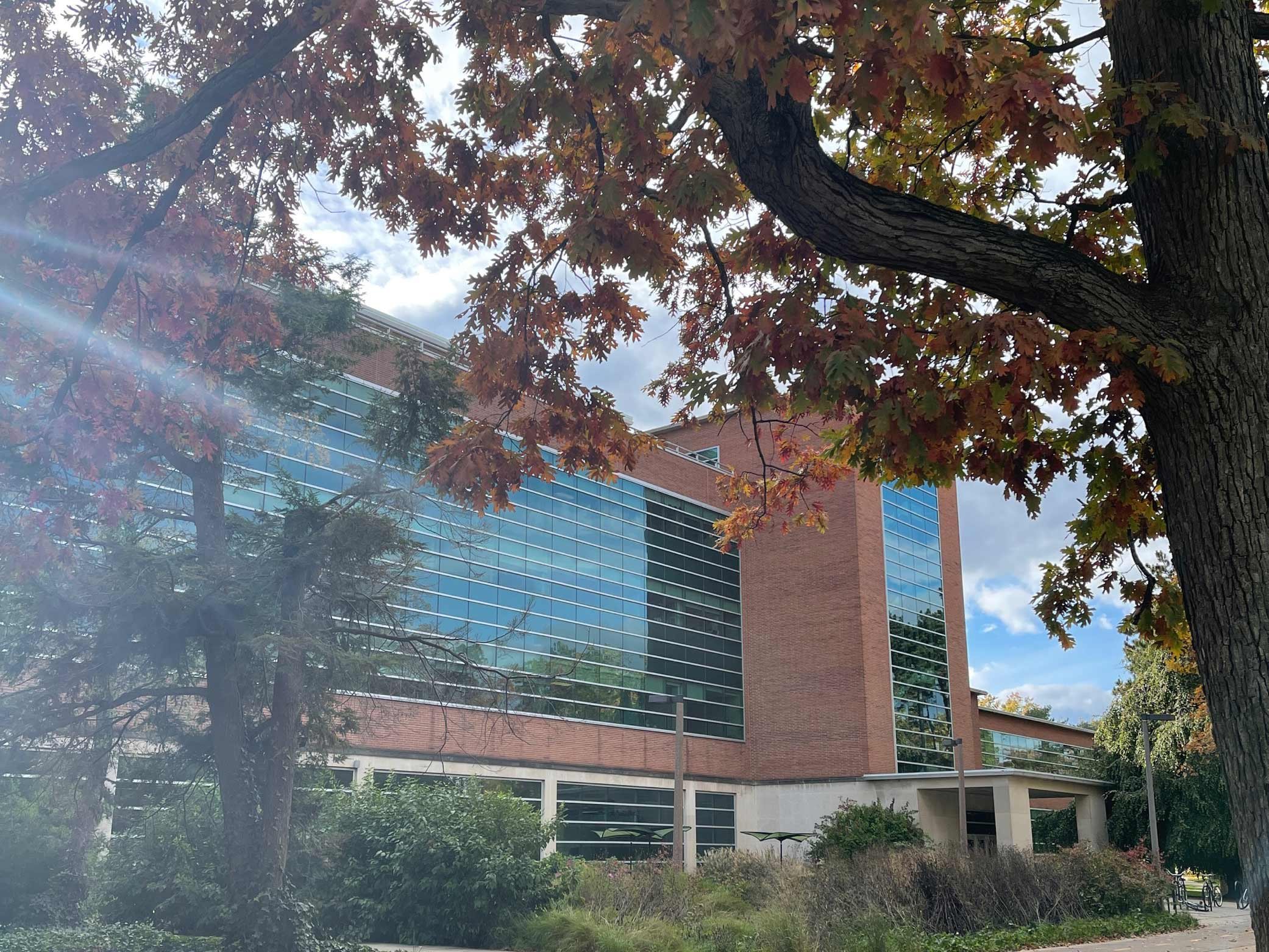By Ben Zimmitti, SAA 2020
Over the holidays, I found myself explaining to multiple friendsand family outside the world of higher education what exactly I learn in mystudent affairs graduate program. Luckily, the past year and a half in MSU’sStudent Affairs Administration program gave me no shortage of material to speakabout. As I reflected on the foundational documents we reviewed, the studentdevelopment theories we critiqued, and the attention given to the livedexperiences of students of marginalized identities, I found myself repeatingthe following statement: We are learning to become advocates for students.

Attending an undergraduate institution just outside the DCBeltway, I am no stranger to the derision aimed at the “special interests” inpolitics and the lobbyists who ensure the status quo holds. Many of thesespecial interests are quite nefarious from the perspective of the “averageperson.” The field of student affairs, however, is a profession designed toadvance and serve the interests of students, and in my time in the SAA program,I believe we ought to lean into this role.
Current students in higher education, future studentsworking their way through the K-12 system, and graduates paying off the $1.5trillion dollars in student loan debt—these groups do not have lobbyistsworking for them directly, yet what could be a more special interest than theeducation of tomorrow’s teachers, home health care aides, librarians, and civilservants? We as student affairs professionals have an obligation to be thatspecial interest group lobbying our policy makers on behalf of students.
This is not to negate or discount the incredible and vitalwork student affairs professionals are doing day in and day out on campusesacross the country. The educational programming, curriculum design, dialoguefacilitation— there is no ignoring the positive influence these functions ofstudent affairs have for students. Rather, there is another important functionwe must perform to ensure our future students have equitable access to highereducation regardless of their home zip code or race, our current students havethe support they require in and out of the classroom to learn and develop, andour past students can thrive post-graduation without having to postpone majorlife decisions to pay down student debt.
While there is no shortage of national, state, and localpolicies that influence our higher education system in the United States, Iwant to focus for a moment on the HigherEducation Act (HEA). The Higher Education Act wasoriginally enacted in 1965 and has since been updated every five or six years,becoming the primary law that dictates a majority of federal financial aidpolicy. The HEA was last updated in 2008, meaning it has been over a decadefilled with significant changes in higher education since the HEA wasreauthorized. As student affairs professionals, we ought to be outraged thatthe government has shirked its responsibility in keeping such an importantpiece of legislation relevant.
Now I know what some folks might be thinking at this point. ButI have 165 emails to respond to and I need to place a catering order for thatprogram this Friday, AND my office just got its budget cut by 30%, AND my bosskeeps telling me I’m supposed to do “Self-care.” It’s not that I don’t careabout the HEA, it’s just that I have other pressing matters to attend to.That is fair, and I completely understand the importance of addressing allthose elements of one’s professional and personal life. Spending timeconsidering something like the reauthorization of the HEA seems wonk-ish andesoteric at best, and downright unimportant at worst. I would argue, again, thereauthorization of the HEA is one of the more important and urgent mattersstudent affairs professionals can spend their time thinking about.
Where do we currently stand on the reauthorization? Earlier in2019, the Senate and House both passed versions of a bill referred to as the FUTUREAct. Among other things, the FUTURE Act would streamline theprocess for applying for federal student aid, ease verification burdens onstudent loan borrowers to stay in income-driven repayment plans and restore$255 million in annual funding to Minority Serving Institutions, such as HBCUs.The FUTURE Act is a potential first step in reauthorizing the HEA more broadly.Currently, the FUTURE Act has stalled in the Senate where it needed to bereconsidered following changes in the House.
More recently in the Fall of 2019, the House Committee onEducation and Labor approved the CollegeAffordability Act (CAA) to be considered by the full House.The College Affordability Act is a true reauthorization of the HEA. Withoutgetting too far into the weeds, some highlights of the CAA include: increasingthe maximum Pell Grant award by $500, and tying future increases of the maximumto inflation; expanding Pell eligibility to individuals who were formerly incarcerated;making Dreamers eligible for all federal financial aid; and, creating newaccountability standards and procedures for accreditors to employ in determininginstitutional eligibility for federal financial aid dollars.
The American Council on Education, ACPA, and most institutional-type-based organizations (i.e. the Association of Public and Land-grant Universities) oppose the College Affordability Act over what they describe in an open letter to the House Education and Labor Committee as a massive intrusion by the federal government into the everyday operations of colleges and universities. At the same time, groups such as the National Education Association and The Education Trust have fully endorsed the bill. Groups such as NASPA and the UNCF have offered more timid support for the bill in its current form.
What are student affairs professionals to do with thecontradictory opinions? Review the above statements and briefs and formulateyour own opinion on what are the important aspects to be included in an updatedHEA! Now that you understand the breadth of what the HEA can regulate, you knowwhat changes might support your students’ success. And if you don’t know, youcan ask them! Would your students benefit from receiving a bit more Pell grantmoney to cover one more class of credits? Do you think your students wouldbenefit from having an easier time completing the FAFSA each year, so no oneloses financial aid due to red tape? Should we maintain and expand funding forschools that are designed to serve students historically excluded from spacesof higher education, so they have a space to learn and develop holistically?
Student affairs professionals can and must care about theminutia, because the minutia directly influence the way our students show up inspaces. Minutia can either pose a barrier or extend a helping hand to studentsaccessing higher education, and it is part of our jobs as student affairsprofessionals to help make this translation on behalf of our students.
Armed with this knowledge and bevy of resources, andhopefully inspired to make change, what is your next step? In the immediateterm, both the FUTURE Act and the College Affordability Act languishing in theSenate and House respectively. It is going to take a massive amount ofpolitical will to break the logjam and get things moving again. Ourrepresentatives must know there is a group of their constituents who care aboutthese issues. Use a tool like this one from DataMadeto identify your federal elected officials and call their office to explainyour position about the reauthorization of the HEA, and why you believe itsreauthorization ought to be a priority. Even just leaving a message can have apowerful influence. Identify the chairs of the committees responsible forhigher education bills (House Committee on Education and Labor, and the SenateCommittee on Health, Education, Labor, and Pensions) and see if yourrepresentatives sit on either. From there, begin engaging in the upcoming 2020election cycle at all levels. You can make higher education a priority forcandidates running at all levels of government by doing what educators haveasked students to do for decades: raising your hand and entering the conversation(only please do not wait to be called on in this case)!
As I finish my last semester in school, I look to enter a profession as an advocate for students at not just the campus-level, but at a local, state, federal policy level. I do not enter this profession naively assuming calling my elected officials will bring about structural change on its own; rather, I enter understanding that as my most basic responsibility. Equipped with my education, a privilege I am beyond grateful for, I am excited to fulfill my obligation working on behalf of the specialist of all interests—students.




